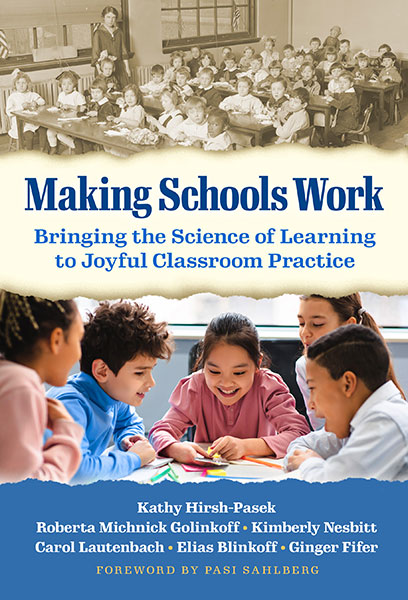
Making Schools Work
Kathy Hirsh-Pasek, Roberta Michnick Golinkoff, Kimberly Nesbitt, Carol Lautenbach, Elias Blinkoff, and Ginger Fifer
Publication Date: October 28, 2022
Pages: 208
On November 8, Kathy Hirsh-Pasek and colleagues published a piece at Brookings looking at the latest NAEP scores. They begin,
We are gathered today to mourn the latest National Assessment of Educational Progress (NAEP) scores. The headlines rang forth as the New York Times proclaimed, “The Pandemic Erased Two Decades of Progress in Math and Reading” and “Math Scores Fell in Nearly Every State, and Reading Dipped on National Exam.” The dip was particularly pronounced for low-performing students who come from traditionally underserved environments. In an attempt to resuscitate the ailing scores, Martin West of the Harvard Graduate School of Education is quoted as saying that we should find ways to “increase instructional time.”
There are clearly troubling signs from these latest reports, but it does help to put this data into the larger context, looking at patterns of assessment performance over time. We are amid an educational crisis that has been brewing for decades and that was exacerbated during the pandemic. For example, the Programme for International Student Assessment (PISA) is an international test that has been given to a sample of 15-year-olds from across the globe for 22 years. American students’ scores have remained fairly stable for about the past two decades—consistently around average among participating nations. Our scores represent achievement levels demonstrating that our students can memorize content, but cannot use the content they know to solve complex problems.
Read the full piece, where the authors go on to explain how their new book Making Schools Work lays out a scalable, evidenced based path to re-invigorating and re-imagining education for our time, via Brookings.
